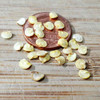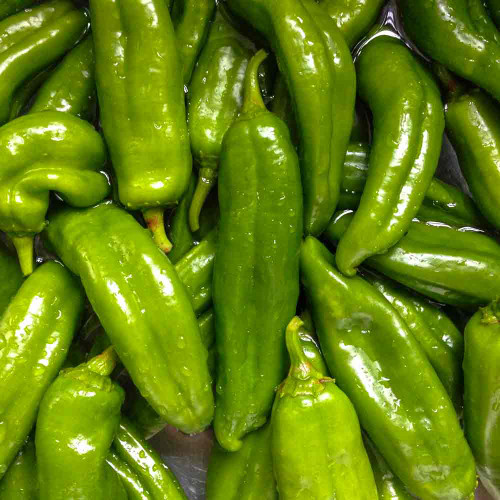Description
Red Peter Pepper - Spice Up Your Garden
You should grow this chile despite its unusual shape. Appearances aside, this is a surprisingly good pepper with an excellent flavor balanced by a good amount of heat. Flavors are immediate and bright with almost fruity overtones showing up a few seconds later, just about the time the heat arrives. The heat builds steadily, equaling the flavors before beginning to subside a couple of minutes later. An excellent pepper for fresh, fermented or pickled uses to capture the flavor and heat.
The Peter pepper is perhaps a bit too aptly named, as it matures into a long cylindrical shape with a bulbous end sharing an uncanny resemblance to the male organ. It ripens from green to shock-me-red.
The origins are obscured, but it was introduced commercially by the late H. W. Alfrey of Knoxville, Tennessee, who named the variety for its obvious similarity in appearance to a male anatomical part.
Details
The blush-inducing fruit grows fairly prolifically on dense plants 20 - 30” tall, well-shaded by a good leaf canopy. Pods are 3 - 5” long and 1 - 1 1/2” wide.
Heat levels will vary according to climate and moisture availability, but it is hotter than most jalapeños and parallels the famous Serrano chile in terms of overall heat. A good rule of thumb is the mildest peter pepper will always closely equal the hottest possible jalapeño.
The flavor arrives after the first hit of heat, with deliciously sweet and fruity notes, often described as bright and crisp. The flavor profile fully emerges during ripening, so the bright red fruits are excellent in spicing fresh salsas.
Uses
Remove the ribs or veins and seeds for a mellower heat with all of the flavor. This chile responds well to pickling or fermenting, adding its distinctive flavors to the recipe. Fresh salsas like pico de gallo benefit from the fruity overtones and heat, while roasting on a hot skillet after de-veining and removing the seeds deepens and enrichens the flavors.
For an incredibly rich and complex dried chile flavor, leave the ripe red fruits on the plant until they dry to a leathery stage, then harvest and let fully dry in a paper bag. Use as crushed chile or grind into powder for later use.
Learn More
- Growing Peppers 101
- Chile and Pepper Growing Tips
- Grow Better Peppers with Shade
- Fermented Pepper Sauce
- Fermented Chile Paste
From the soil to the seed to the food you eat - we'll help you grow your best garden!















